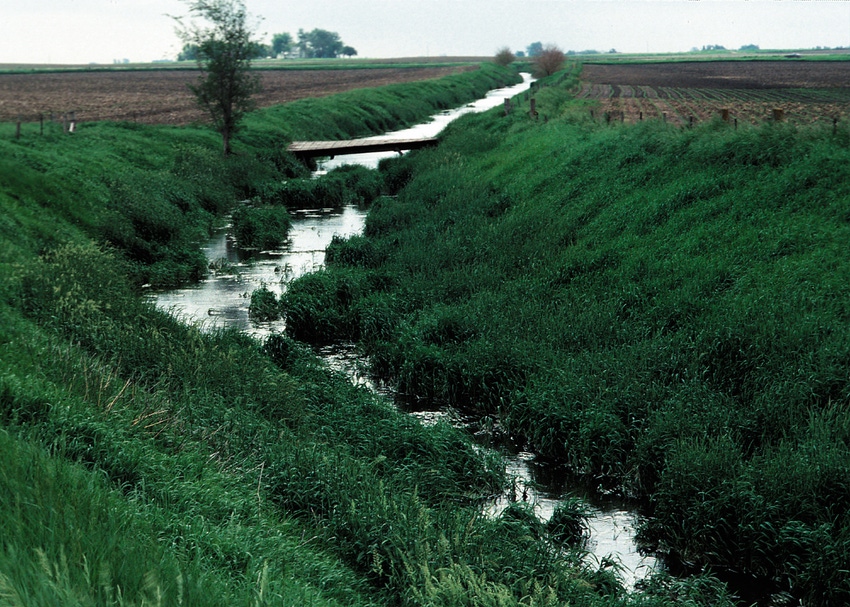March 9, 2018

The Agricultural Drainage Management Coalition (ADMC) Member Companies and Dr. Dan Jaynes with the National Laboratory for Agricultural & The Environment collaborated to quantify the effectiveness of installing saturated buffers on buffers enrolled in the conservation reserve program to reduce nutrient loading from tile drainage waters. This demonstration program builds upon this same group of collaborator’s findings from the 2012-2015 project that evaluated the ability for saturated buffers at field scale to reduce nitrate and phosphorus from field drainage systems.
With many of the row-crop agriculture fields in the Midwest being located adjacent to ditches, streams, rivers and lakes, it is no surprise that nutrient transport from agriculture lands is a major concern. Large areas of the Midwest are intensively tile drained and it is assumed that many of the vegetated buffers adjacent to waterways are being under-utilized, because the tile outlets quickly move large amounts of subsurface flow past the buffer and into the receiving waterway without any opportunity for treatment by the buffer.
The project collaborators sought to demonstrate and evaluate the effectiveness of a new conservation practice commonly referred to as a Saturated Buffer (SB). The goal of a SB system is to hydrologically reconnect a subsurface drainage outlet with an edge-of-field buffer. This practice takes advantage of both the denitrification and plant nutrient uptake opportunities that are known to exist in buffers with perennial vegetation.
This project monitored 9 SB’s in Iowa, Illinois, and Minnesota. These sites intentionally included a variety of soil types, buffer vegetation, surface topographies, and ditch/stream channel depths. The monitoring timeline included a period from September 2016 through February 2017, yielding 6 months of flow and nutrient samples.
All 9 sites were consistent in showing nitrate concentration reductions from the main line of the drainage system to the stream side test well. This reinforces data from the previous study where 27 out of 28 field years indicated the same reductions. Current data collection techniques heavily support the use of saturated buffers as a credible nitrate load reduction practice. The cost per pound of nitrate removed is low compared to other nitrate removal practices.
To view the full research report and find additional information and videos pertaining to saturated buffer systems, please visit www.saturatedbufferstrips.com.

A saturated buffer system has a control structure that diverts the flow from the outlet to a lateral distribution line. The lateral distribution line runs parallel to the buffer and as the water is diverted to this line a saturation occurs. As this saturation, or lateral water movement through the buffer, occurs the vegetation naturally removes the nutrients in the water.
About the Project Collaborators
The Agricultural Drainage Management Coalition (ADMC) is a nation-wide group of agricultural, industry, and environmental interests that have come together to promote drainage water conservation practices. The ADMC includes over 60 key stakeholders, including individual farmers, industry manufacturers, and environmental groups like The Sand County Foundation. The National Laboratory for Agriculture and the Environment generates information, which addresses critical problems in agriculture and watershed management leading to the development of innovative solutions, which increase the efficiency of agriculture systems and reduce environmental risk. Transdisciplinary teams address this mission through coordinated research addressing problems in abiotic and biotic systems that underpin agricultural and watershed systems.
You May Also Like




